Amidst economic fluctuations, dental practices with efficient systems will be well-positioned to increase production and experience robust growth, no matter the economy. Do your systems need updating? Review your office systems routinely or when a change in services or equipment becomes a good time to make your office more efficient.
Practices able to implement effective systems will:
- Improve production, profit, and efficiency.
- Experience higher levels of patient care and satisfaction.
- Lower stress and foster a more enjoyable work environment.
- Allow time for the dentist to focus on leadership and team building without distracting from patient care.
- Have a more motivated team.
- Quickly train new team members.
- Adapt to change faster.
Achieving Your Production Potential
Growth is directly proportional to the effectiveness of a practice’s systems. The more effective the systems, the greater the potential for immediate and long-term growth in terms of new patients, production, and profitability. To achieve maximum growth, practices should start by updating or replacing their scheduling, case presentation, and customer service systems.
Scheduling
The schedule serves as the management foundation for the practice. Reorganizing the schedule is a simple way to boost profitability by as much as 30%. It is almost impossible to redesign other systems without first addressing the schedule. The following steps are necessary to build an effective scheduling system:
- Create a Scheduling Template. Each day should have a similar structure. Mornings should be reserved for larger, high-production cases. By completing a significant portion of the daily production in the morning, the practice will be more than halfway to its daily goal by noon.
- Establish Daily Production Based on the Annual Goal. Divide the total annual production goal by the number of days the practice will be available to treat patients. This determines the daily goal for each practice. For example, if the annual production goal is $1 million and the practice is open 200 days a year, then the daily goal is $5,000.
- Use 10-Minute Units. Many practices are still using 15-minute units for their schedules. Inaccurate scheduling can cost a practice 12 to 15 days of lost treatment time each year. By shifting to 10-minute increments, practices can schedule patients more accurately. For example, in schedules that use 15-minute units, a 20-minute appointment must either be under-scheduled or over-scheduled.
- Reserve Time for New Patients or Emergencies. New patients are the key to increasing production. By reserving specific blocks in the schedule, practices can accommodate new patients quickly and efficiently.
Case Presentation
Practices should present every patient with a comprehensive treatment plan that includes both need-based and esthetic services. Various patient education tools, including CAESY Education Systems, Guru from Dentrix, and Easy Dental Patient Education, can help with case presentations.
The following steps should be incorporated into the practice’s case presentation system:
- Educate Patients. The dentist and the team should educate patients about all their services. Script these conversations to ensure consistency.
- Promote Benefits. Don’t overemphasize the clinical details of the recommended treatment. Patients want to know how they will ultimately benefit, and it is up to the dental team to highlight all those benefits.
- Use Internal Marketing. Have supporting educational materials, such as brochures, available to reinforce services discussed during the appointment.
- Follow-up. Many cases are lost because practices leave it to patients to follow up on their next appointment. Have a front desk team member reserve the next appointment before the patient leaves the office. Many products, such as Dental Sesame, Televox, and Smile Reminder, automate patient communication.
- Offer Options. To help make dental procedures more affordable, practices should offer a variety of financial options, including a 5% courtesy adjustment for payment in full, half up front and half before treatment is completed, and outside financing, such as Care Credit, Springstone, and Chase.
Customer Service
Customer service is the driving force behind the success of any business, and it does not happen by accident. A dental practice cannot provide the best customer service by relying on the personalities of the dental team. Team members will have days when they are not at their best. Without having the proper customer service systems in place, there is no way to rectify and avoid the consequences of these situations.
The following steps can help take customer service to the next level:
- Design scripts for every patient interaction.
- Call patients by their name.
- Learn one new thing about patients during every visit. And NOTE it.
- Begin each patient conversation with something personal as opposed to jumping in with a clinical conversation.
- Call patients in the evening to see how they are feeling after today’s procedure.
- Thank patients who refer family and friends with a handwritten note or a phone call.
- Maintain a clean and attractive office, especially in high-traffic areas.
Minimized Waste = Maximized Production
The best systems allow practices to achieve their production potential. Even during an economic downturn, some practices will keep growing. Why? Because they have strong systems in place that minimize waste while maximizing production opportunities. Processes lead to efficiency. Efficiency leads to productivity. Productivity leads to profitability.

Kathleen Johnson is a dental practice management and transition consultant with more than 35 years in the dental field.
FMI: www.kjohnsonconsulting.biz
Read more from Kathleen:
Trojan Today | Kathleen Johnson | Decoding the Codes: Bridges & Dentures (trojanonline.com)
Trojan Today Classic | Kathleen Johnson | What’s Code Got to Do with It? (trojanonline.com)

